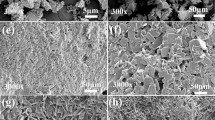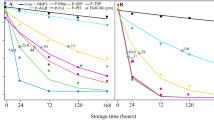Abstract
CONSIDERABLE interest has been shown in the mineralization of ureaformaldehyde, a compound with “slow release” properties of value in fertilizer technology. It has been suggested that the release of ammonium–nitrogen from this polymer is biological1, although Winsor and Lang2 proposed that the first stage of decomposition may be non-biological. Commercial ureaformaldehyde is composed of various chain length polymers, which can be arbitrarily grouped into the cold water soluble (CWS), hot water soluble (HWS) and hot water insoluble (HWI) fractions.
This is a preview of subscription content, access via your institution
Access options
Subscribe to this journal
Receive 51 print issues and online access
$199.00 per year
only $3.90 per issue
Buy this article
- Purchase on Springer Link
- Instant access to full article PDF
Prices may be subject to local taxes which are calculated during checkout
Similar content being viewed by others
References
Fuller, W. H., and Clark, K. G., Soil Sci. Soc. Amer. Proc., 12, 198 (1947). Haep, J. T., Haden, W. W., and Anderson, A. E., J. Agric. Food Chem., 13, 176 (1965).
Winsor, G. W., and Lang, M. I. E., J. Sci. Food Agric., 9, 185 (1958).
Lees, H., and Quastel, J. H., Biochem. J., 40, 815 (1946).
Jensen, H. L., Canad. J. Micros., 3, 151 (1957).
Author information
Authors and Affiliations
Rights and permissions
About this article
Cite this article
CORKE, C., ROBINSON, J. Microbial Decomposition of Various Fractions of Ureaformaldehyde. Nature 211, 1202–1203 (1966). https://doi.org/10.1038/2111202a0
Issue Date:
DOI: https://doi.org/10.1038/2111202a0
This article is cited by
-
Mineralization and nitrification of ureaform fertilizers
Fertilizer Research (1988)
-
Relative susceptibility of conventional and experimental nitrogen sources to ammonia loss from flooded rice fields
Fertilizer Research (1987)
-
Mineralisation of urea and urea derivatives in anaerobic soils
Plant and Soil (1979)
Comments
By submitting a comment you agree to abide by our Terms and Community Guidelines. If you find something abusive or that does not comply with our terms or guidelines please flag it as inappropriate.



